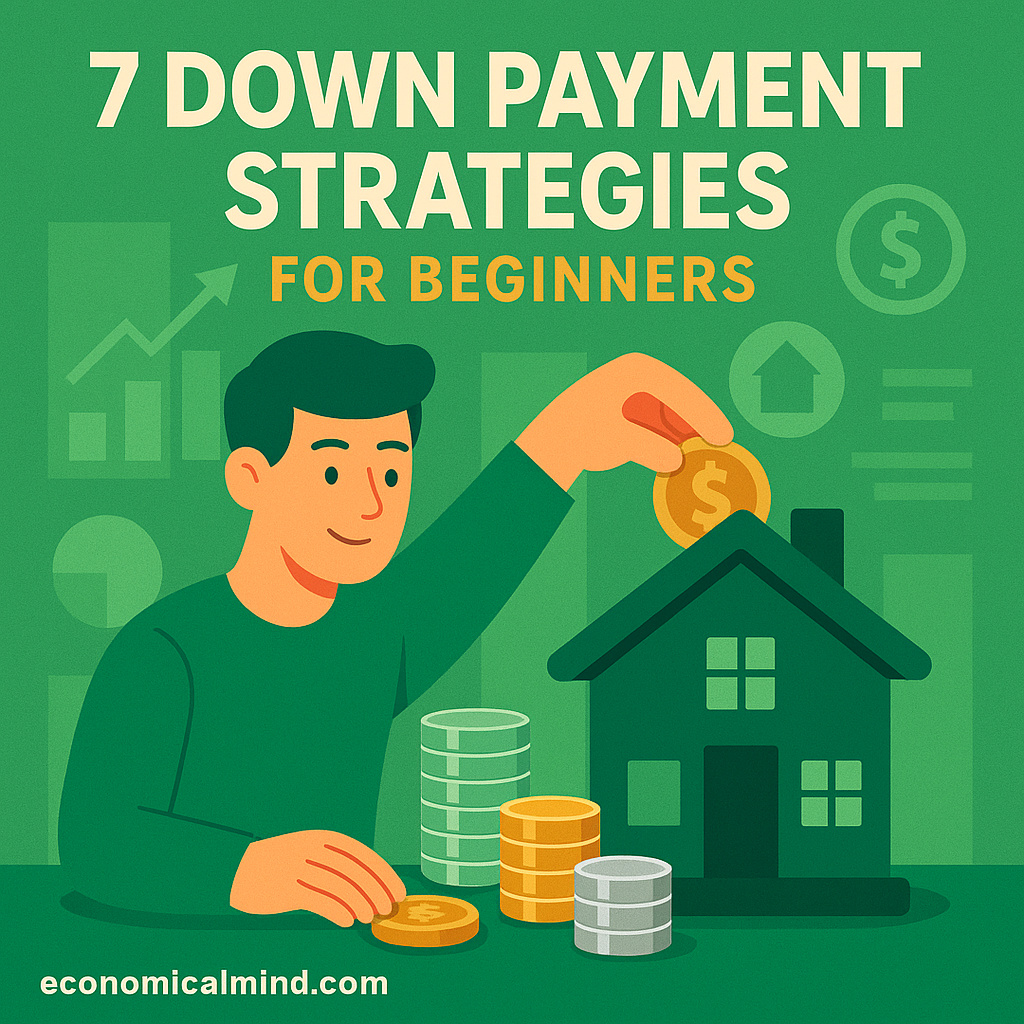
Why Down Payment Planning Matters
A home is one of the biggest purchases you’ll ever make — and the down payment is often the biggest obstacle.
With home prices still high and mortgage rates fluctuating, saving for that initial amount requires both strategy and patience.
But here’s the good news: You don’t always need 20%. Many first-time buyers become homeowners with as little as 3% to 5% down, thanks to smarter planning and loan options.
1. Set a Realistic Down Payment Goal
Your down payment doesn’t have to be overwhelming — but it does need a plan.
Start by understanding the basics:
- Conventional loans: As low as 3% down
- FHA loans: 3.5% down (credit score 580+)
- VA and USDA loans: 0% down for eligible buyers
Example:
For a $350,000 home, 5% down equals $17,500. Break that into smaller monthly goals — like $400 per month for four years — and it suddenly feels doable.
2. Automate Your Savings
The simplest and most effective strategy is automation.
Set up a dedicated high-yield savings account just for your down payment and automate transfers from your paycheck each month.
Apps like Ally, SoFi, and Betterment allow you to set savings goals, track progress, and earn interest while your money grows.
Pro tip: Name the account something motivational — like “My First Home” — to stay inspired.
3. Cut Back Strategically (Not Drastically)
You don’t need to live like a monk to save faster. Instead of cutting everything, focus on high-impact savings areas.
Examples:
- Cancel unused subscriptions and gym memberships
- Cook at home 3 nights per week instead of dining out
- Shop around for cheaper car insurance or cell plans
- Sell unused electronics or clothes online
Even $100–$200 per month adds up fast over time. Combine these small savings with automated transfers for momentum.
4. Take Advantage of Down Payment Assistance Programs
There are hundreds of state and local programs designed to help first-time buyers.
Many offer grants or low-interest loans you don’t have to repay if you meet certain requirements.
Examples include:
- Fannie Mae HomeReady® and Freddie Mac Home Possible® (3% down options)
- State housing finance agency programs (varies by state)
- City-specific grants for low- to moderate-income buyers
You can find programs near you at HUD.gov or by talking to a local mortgage advisor.
5. Use Windfalls and Bonuses Wisely
Unexpected cash is your down payment’s best friend.
Instead of splurging, direct windfalls such as:
- Tax refunds
- Work bonuses
- Holiday gifts
- Side hustle income
Straight into your home fund. You won’t miss money you didn’t count on — and it can shave months or even years off your goal.
6. Explore Shared Equity or Co-Buying Options
For those priced out of expensive housing markets, shared equity or co-buying can make homeownership possible.
- Shared equity programs: You buy part of the home, and an investor covers the rest in exchange for a share of future profits (e.g., Divvy, Landed).
- Co-buying: Team up with family or friends to purchase together, splitting both the costs and equity.
These creative options can reduce upfront costs and open doors in competitive housing areas.
7. Keep Your Credit Score Strong
Your credit score directly affects your mortgage interest rate — and a lower rate means you’ll need less cash overall.
To keep your score healthy:
- Pay every bill on time
- Keep credit card balances below 30%
- Avoid new debt six months before applying for a mortgage
Even a 0.5% difference in your mortgage rate can save you tens of thousands over the life of your loan.
Bonus Tip: Know When to Buy
Timing matters.
Housing markets may fluctuate regionally, so research when and where conditions favor buyers.
If mortgage rates drop or prices stabilize, that could be your signal to act.
Remember — preparation beats perfect timing. A well-prepared buyer can seize opportunities whenever they arise.
Final Thoughts
Saving for a down payment takes effort, but it’s 100% achievable with consistency and the right strategy.
By automating savings, leveraging assistance programs, and protecting your credit, you’ll move closer to homeownership month by month.
Start where you are, plan smart, and soon you’ll be holding the keys to your first home.
